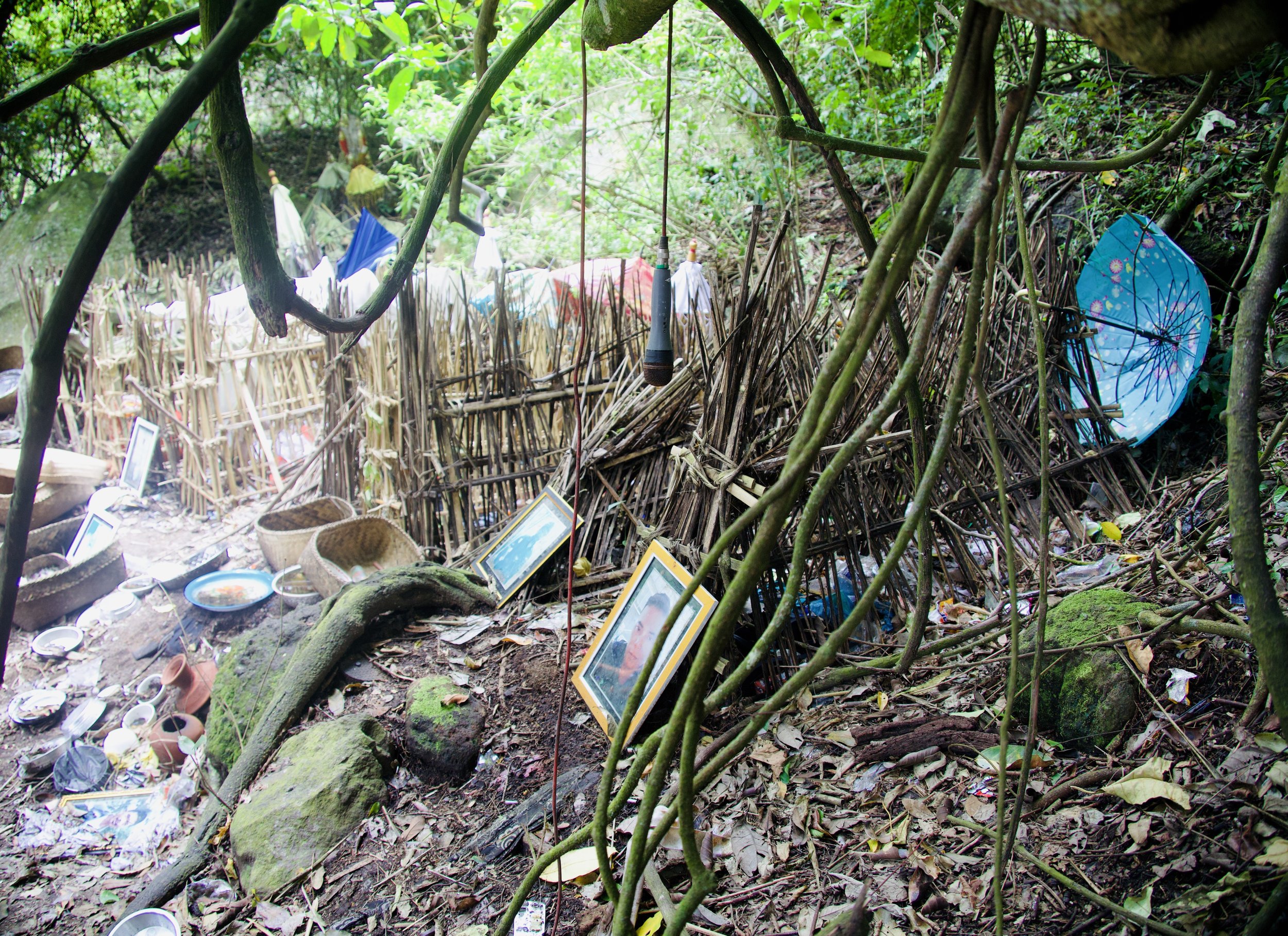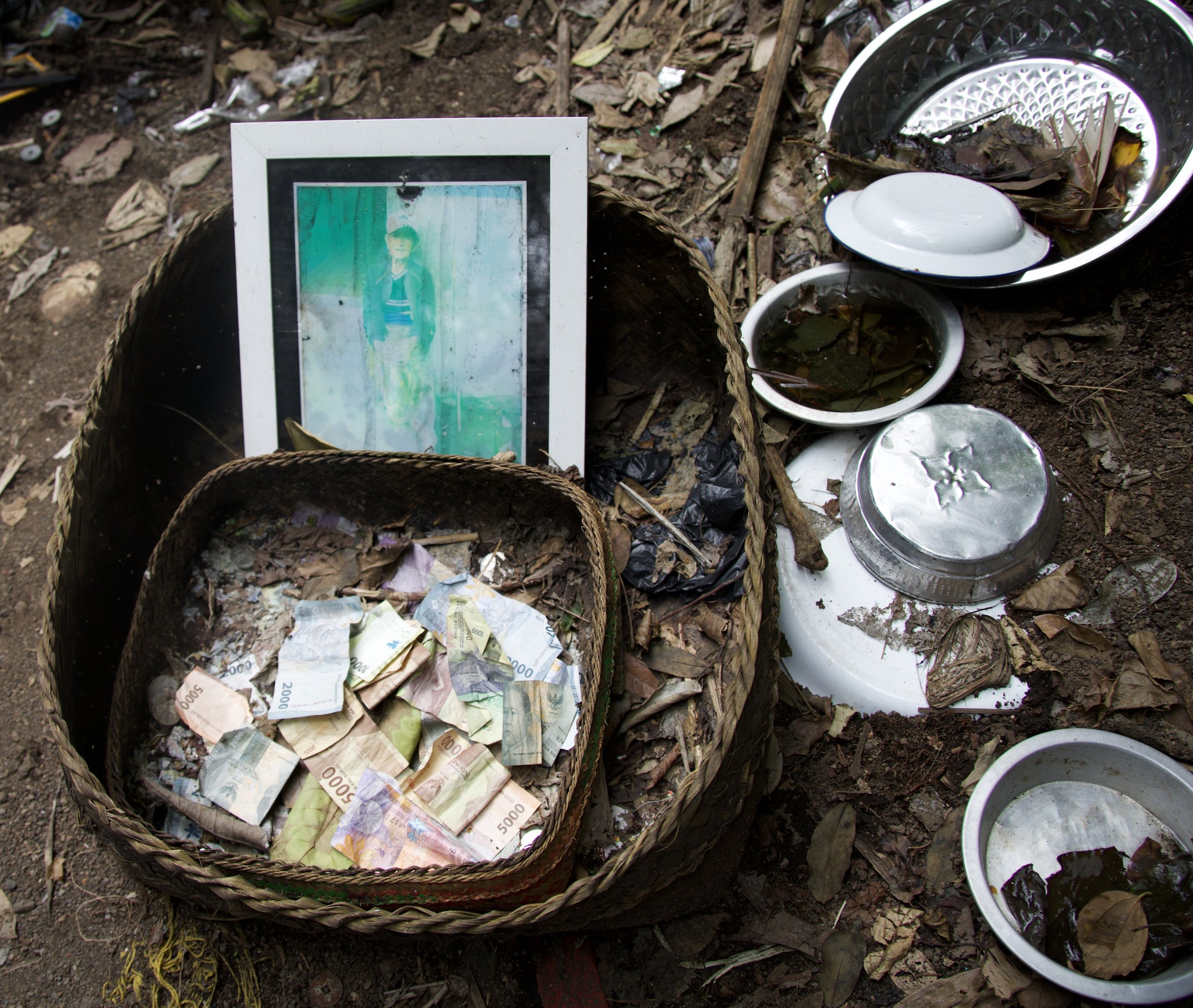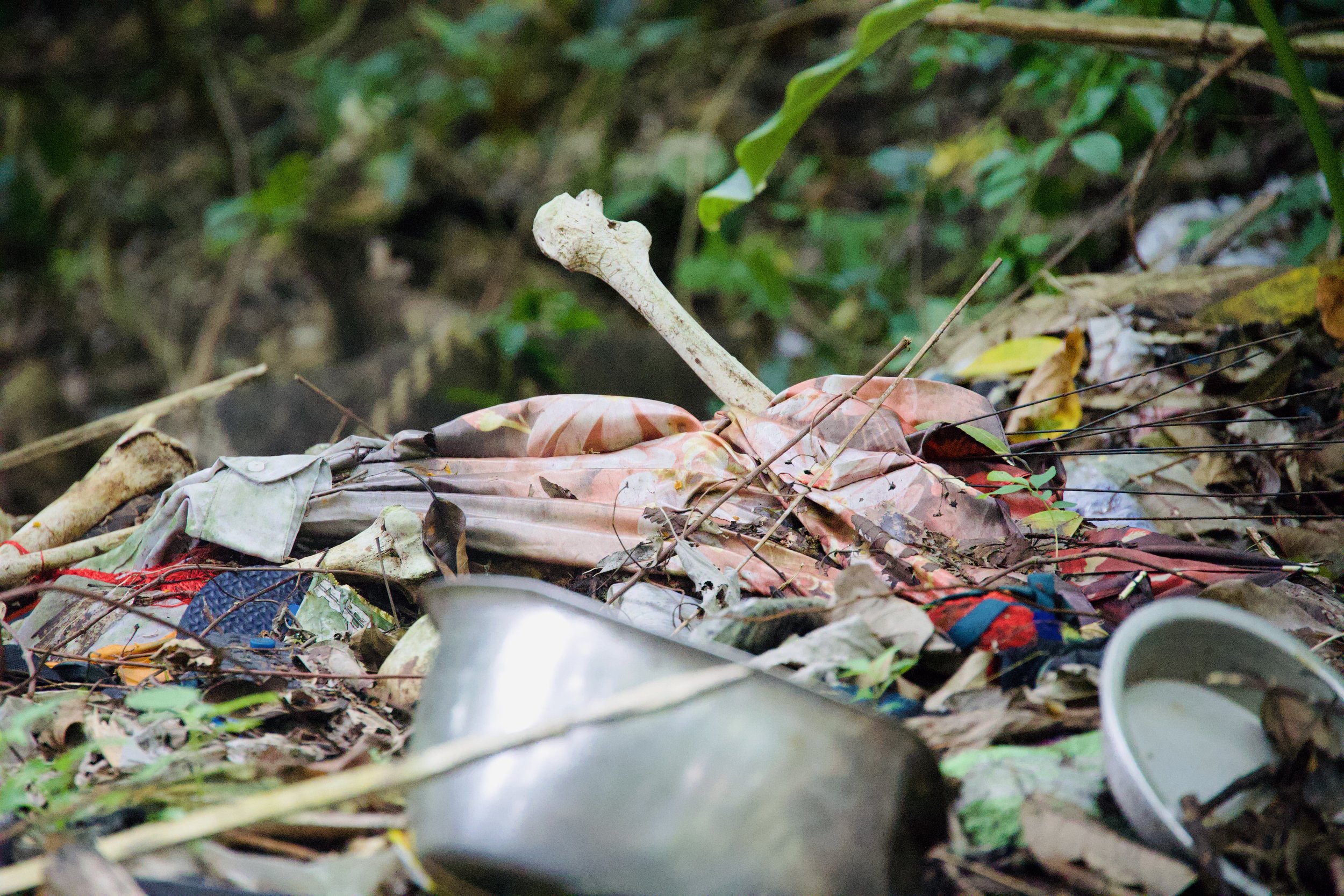Nothing in the Trunyan cemetery is accidental. What may appear to the outsider as a disordered pile of bones or a haphazard resting place is, in fact, a carefully maintained spiritual system. At any given time, only eleven bodies may rest in the open-air cemetery of Seman Wayah. Eleven. Not ten. Not twelve. This number is fixed and sacred.
When a new death occurs and all spaces are occupied, the body that has been there the longest is removed. It’s not done by officials or priests, but by the family of the newly deceased—an act that speaks to the communal responsibility of death. The removed body is taken from its bamboo cage and placed in the growing mound just beyond the burial site—a slope of earth and ritual leftovers where old offerings, bones, and everyday objects slowly collapse into one another.
There, in the mix, are combs, wooden plaques, umbrellas, and bowls—items once placed with care beside the dead, now slowly returning to the soil. Pelvis bones, femurs, and skulls protrude between fragments of bamboo and weather-worn cloth. This is not an ossuary, not a monument—it is a continuation. The cemetery does not deny the material truth of death; it makes space for it, visibly and unceremoniously, as part of the ongoing cycle.
Each new body is placed beneath a small, simple bamboo structure—often mistaken as a guard against animals. But these ancak saji are not for physical protection. Their purpose is spiritual. In Balinese cosmology, the time just after death is one of profound vulnerability. The soul is still near, not yet fully separated. In this liminal state, it can be manipulated—especially by black magic (leak). The bamboo structure acts as a spiritual shield, offering temporary sanctuary while the soul completes its crossing.
Eligibility for this form of burial follows strict tradition. Only those born of the Bali Aga lineage, who have married, and who have died of natural causes may rest beneath the Taru Menyan. Children, the unmarried, or those who died by accident or violence are buried elsewhere, with different rites. This is not rejection. It is alignment—ensuring each death follows the correct spiritual trajectory.
As you walk among the skulls, some arranged in shrines, others resting on stones, you begin to understand: there are no names etched in marble, no grave markers to endure. But there is presence. Remembrance lives in daily offerings of incense, rice, and flowers. In the care of rearranged bones. In the decision not to hide the body, but to let it be—exposed, returned, and ultimately, transformed.
























